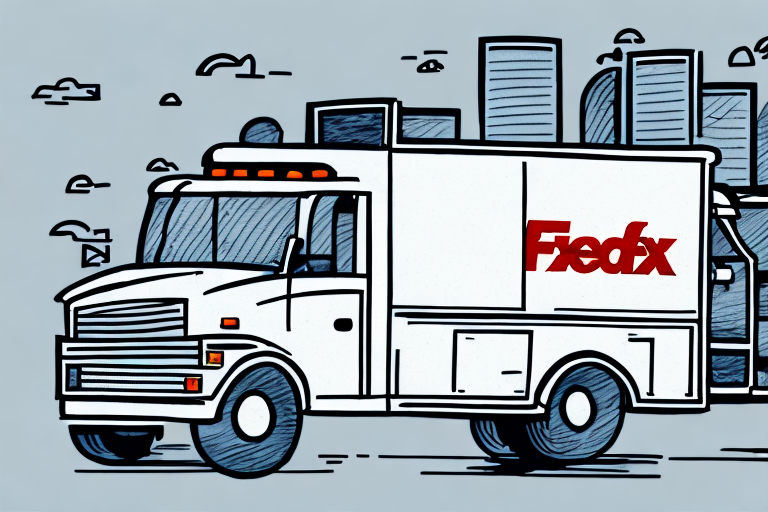Investigating the Causes of Delayed Delivery with FedEx
When it comes to shipping products, FedEx stands out as one of the most trusted and sought-after delivery services in the market today. With its reliable reputation and global reach, FedEx has been instrumental in making e-commerce possible on a large scale. However, even with the best efforts, delivery delays can occur. Understanding the impact of these delays on your business, identifying their common causes, and knowing how to address them is crucial for maintaining customer satisfaction and operational efficiency.
Understanding the Impact of Delayed Delivery on Your Business
Timely deliveries are a cornerstone of customer satisfaction in e-commerce. When products arrive late or in poor condition, it can lead to disappointment, frustration, and dissatisfaction among customers. This not only affects immediate sales but can also result in negative reviews and ratings, tarnishing your brand’s reputation.
- Loss of Sales and Revenue: Delays can lead to abandoned carts and lost sales opportunities.
- Negative Brand Reputation: Consistent delays can erode trust and loyalty among customers.
- Customer Retention: Dissatisfied customers are less likely to return, affecting long-term growth.
One primary cause of delivery delays is poor logistics management, which includes issues like incorrect addresses, inefficient routing, and inadequate transportation. To mitigate these problems, businesses should invest in reliable logistics partners and implement robust tracking and monitoring systems.
Unexpected events such as extreme weather conditions, natural disasters, or political unrest can also contribute to delays. While these are beyond a business’s control, having contingency plans and clear communication strategies can help manage customer expectations during such events.
The Importance of Reliable Shipping for E-commerce Success
Reliable shipping is essential for the success of any e-commerce operation. It not only meets customer expectations but also enhances the overall shopping experience. According to a Shopify report, 70% of consumers consider timely delivery as a critical factor in their purchasing decisions.
Managing Shipping Costs
Shipping can be a significant expense, especially for small businesses. To keep costs down, businesses should:
- Negotiate Rates with Carriers: Establishing strong relationships with carriers like FedEx can lead to better rates.
- Use shipping software: Compare rates and find the most cost-effective options.
- Implement Efficient Packaging Practices: Optimize packaging to reduce size and weight, lowering shipping costs.
Effective Communication with Customers
Providing clear and accurate tracking information is vital. Customers expect to receive updates throughout the shipping process, which helps build trust and reduces anxiety about their orders.
FedEx's Shipping Process and Potential Delay Points
FedEx’s shipping process involves several stages: pickup, transportation, sorting, and delivery. At each stage, various factors can cause delays, such as:
- Weather Conditions: Extreme weather can disrupt transportation and sorting operations.
- Traffic and Mechanical Issues: Road closures or vehicle breakdowns can impede timely deliveries.
- Human Error: Incorrect shipping information can lead to packages being misrouted or delayed in sorting facilities.
Customs Clearance for International Shipments
International shipments must pass through customs, which can introduce delays if there are issues with paperwork or if the package contains restricted items. High shipping volumes during peak seasons, like holidays, also increase the likelihood of delays.
To mitigate these delays, FedEx offers services such as package tracking and delivery alerts. Opting for expedited shipping options can prioritize your packages and reduce the chances of delays, although unforeseen circumstances may still cause disruptions.
Common Causes of Delayed Delivery with FedEx and How to Address Them
Incorrect Shipping Information
Providing accurate and complete shipping information is crucial. Double-check addresses and contact details to ensure packages reach their intended destinations without delays.
Remote or Hard-to-Reach Destinations
Shipping to remote areas can inherently come with longer delivery times. Choosing the right delivery option that caters to such locations can help minimize delays.
Customs Clearance Issues
For international shipments, ensure compliance with customs requirements and provide all necessary documentation to avoid delays in customs clearance.
Weather-Related Disruptions
Extreme weather conditions can lead to temporary suspension of services. Tracking weather forecasts and planning shipments accordingly can help mitigate these delays.
Implementing shipping software can aid in proactive management and quick response to potential delay causes.
Best Practices for Working with FedEx to Avoid Delivery Delays
Clear Communication with the Carrier
Maintain open lines of communication with FedEx. Clearly communicate shipping details, preferences, and any special instructions to ensure smooth operations.
Proper Packaging and Labeling
Ensure packages are securely packed and correctly labeled. Proper packaging reduces the risk of damage, while accurate labeling ensures packages are easily identifiable and correctly routed.
Choosing the Appropriate Shipping Option
Select the shipping service that best fits your delivery timeframes and budget. FedEx offers a range of services, from standard to expedited shipping.
Regular Shipment Tracking
Use FedEx’s tracking tools to monitor your shipments regularly. This helps in identifying and addressing potential delays promptly.
Partnering with a FedEx Account Representative
Establishing a relationship with a FedEx account representative can provide personalized advice and support tailored to your business needs.
Alternative Shipping Services to Consider if FedEx Continues to Fail
If FedEx does not meet your delivery expectations despite best efforts, consider exploring alternative shipping services. Some reputable alternatives include:
- UPS: Known for its reliable ground services and extensive network.
- DHL: Specializes in international shipping with a strong global presence.
- USPS: Offers competitive rates for smaller packages and mail services.
- Regional Carriers: Localized services that can provide faster delivery in specific areas.
When choosing an alternative, compare costs, delivery speeds, and reliability. Additionally, consider the environmental impact of your shipping choices. Carriers like UPS and DHL have initiatives to reduce their carbon footprint, which can align with your business’s sustainability goals.
Managing Customer Expectations When Dealing with Shipping Delays
Transparent Communication
Be upfront with customers about any delays. Transparency builds trust and reduces frustration.
Providing Updates and Estimated Delivery Times
Regularly update customers on their order status and provide realistic delivery estimates.
Offering Alternative Options
If possible, offer alternatives such as expedited shipping or alternative delivery locations to accommodate delayed orders.
Excellent Customer Service
Respond promptly and empathetically to customer inquiries and complaints related to delays. Excellent customer service can mitigate negative feelings and maintain loyalty.
Having a clear and concise shipping policy that outlines expected delivery times and potential delays can help manage customer expectations from the outset. Providing proactive communication and tracking information reassures customers and enhances their overall experience.
The Role of Technology in Streamlining the Delivery Process with FedEx
Digital Tracking and Notifications
FedEx offers advanced digital solutions, including online tracking and delivery alerts. These tools allow businesses and customers to monitor shipments in real-time, ensuring transparency and timely updates.
Shipping Software and API Integrations
Integrating shipping software and FedEx APIs can automate shipping tasks, compare rates, and enhance operational efficiency. These integrations reduce manual errors and streamline the shipping process.
Warehouse Management Systems (WMS)
Implementing a warehouse management system can optimize inventory management, order processing, and shipping logistics, contributing to faster and more reliable deliveries.
Innovations in Delivery Technology
FedEx is exploring the use of drones and autonomous vehicles for last-mile delivery. These innovations aim to reduce delivery times and lower operational costs. Additionally, electric vehicles and optimized routing contribute to more sustainable delivery practices.
Technology not only enhances efficiency but also supports sustainability. FedEx’s initiatives to use electric vehicles and optimize delivery routes help reduce carbon emissions, aligning with environmentally conscious business practices.
Tips for Handling Customer Complaints Related to Delayed Deliveries with FedEx
Professional and Empathetic Response
When a customer files a complaint about a delayed delivery, respond professionally and empathetically. Listen to their concerns and apologize for the inconvenience.
Providing Solutions and Alternatives
Offer practical solutions such as expedited shipping for future orders or refunds where appropriate. Providing alternatives demonstrates a commitment to customer satisfaction.
Resolving Issues Promptly
Ensure that the issue is addressed quickly to prevent further frustration. Timely resolution can turn a negative experience into a positive one.
Using Feedback for Improvement
Analyze customer complaints to identify recurring issues. Use this feedback to improve your shipping processes and reduce the likelihood of future delays.
Overall, investigating the causes of delayed delivery with FedEx is essential for any business that relies on the carrier for shipping. By understanding the potential risks, implementing proactive measures, and leveraging technology, businesses can maintain a positive reputation, retain loyal customers, and drive growth and revenue.








